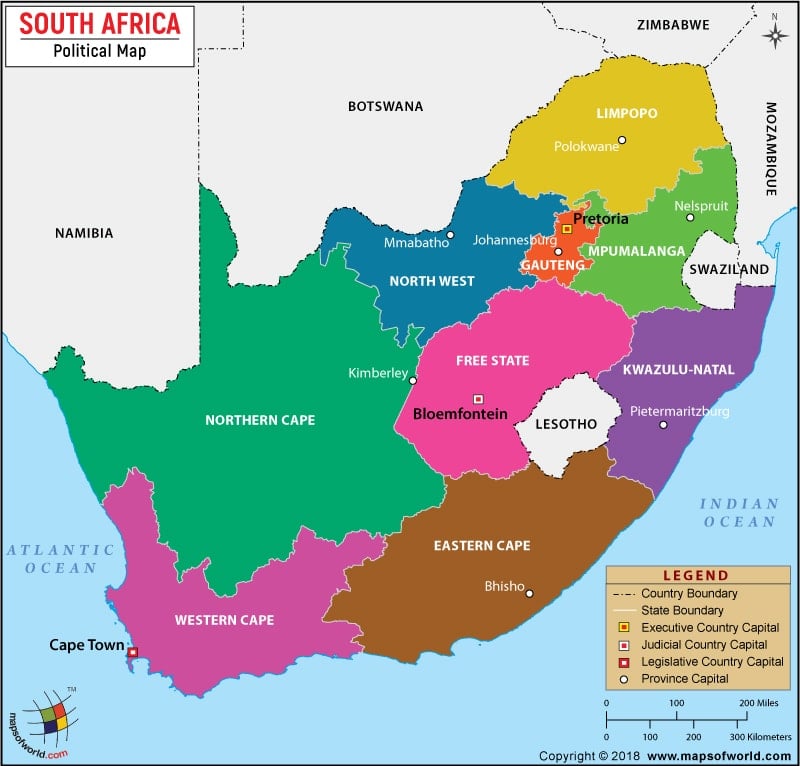19.5K
- South Africa Cities - Durban, Pretoria, Soweto, Cape Town
- South Africa Provinces - Eastern Cape, Free State, Gauteng, KwaZulu-Natal, Limpopo, Mpumalanga, North-West, Northern Cape, Western Cape
- Neighboring Countries - Lesotho, Swaziland, Botswana, Zimbabwe, Namibia
- Continent And Regions - Africa Map
- Other South Africa Maps - South Africa Map, Where is South Africa, South Africa Blank Map, South Africa Road Map, South Africa River Map, South Africa Physical MapSouth Africa Flag Map
South Africa Political Map shows its 9 provinces, 3 national capitals and each province capital with political boundaries, it is also available for download.
 Wall Maps
Wall Maps